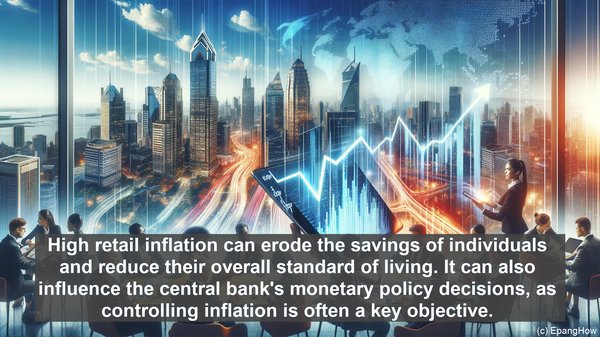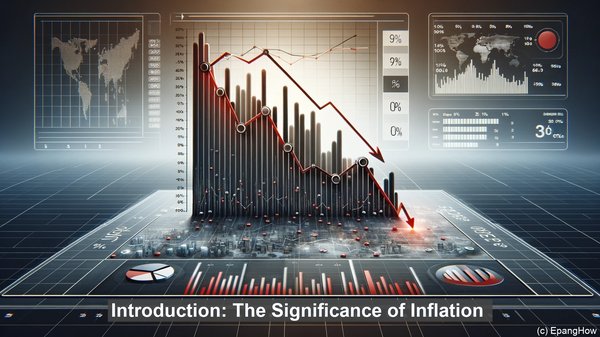Introduction: The Significance of Inflation
Hello everyone! Inflation, the rate at which the general level of prices for goods and services is rising, is a crucial factor that influences our purchasing power and the overall economy. It’s essential to comprehend the various types of inflation, as they can have distinct implications. Today, we’ll focus on the differences between retail inflation and wholesale inflation, shedding light on their unique characteristics and effects.
Defining Retail Inflation
Retail inflation, also known as consumer inflation, refers to the increase in the prices of goods and services experienced by the end consumers. It’s the inflation we encounter in our day-to-day lives, from the cost of groceries to transportation fares. Retail inflation is typically measured using indices like the Consumer Price Index (CPI), which tracks the price changes of a basket of commonly purchased items. It’s a critical metric for gauging the impact of inflation on household budgets and standard of living.

Exploring Wholesale Inflation
On the other hand, wholesale inflation, also called producer inflation, pertains to the price changes of goods and services at the wholesale level, before they reach the retail market. It’s the inflation experienced by businesses, manufacturers, and suppliers. Wholesale inflation is often measured using indices like the Wholesale Price Index (WPI), which monitors the price fluctuations of goods traded between businesses. This metric is valuable for assessing the cost pressures faced by producers and can have implications for the overall supply chain and production costs.

Causes of Retail Inflation
Several factors contribute to retail inflation. One primary driver is the demand-supply dynamics. When the demand for goods and services exceeds the available supply, prices tend to rise. Additionally, changes in production costs, such as wages, raw material prices, and transportation expenses, can also impact retail inflation. Monetary factors, like changes in interest rates and money supply, can influence consumer spending and, consequently, inflation. Finally, external factors, such as global commodity prices or geopolitical events, can have ripple effects on retail inflation.
Factors Influencing Wholesale Inflation
Wholesale inflation is influenced by various factors, some of which overlap with retail inflation. For instance, changes in production costs, including input prices and wages, can impact wholesale inflation. However, other factors specific to the wholesale level also come into play. These include fluctuations in global commodity prices, exchange rates, and trade policies. Additionally, the state of the overall economy, such as the level of industrial activity and business sentiment, can affect wholesale inflation.
Impacts of Retail Inflation
Retail inflation has direct consequences for consumers. When prices rise, our purchasing power diminishes, and we may have to spend more on essential items, leaving less for discretionary expenses. High retail inflation can erode the savings of individuals and reduce their overall standard of living. It can also influence the central bank’s monetary policy decisions, as controlling inflation is often a key objective. Additionally, retail inflation can have socio-political implications, as it can impact public sentiment and even shape electoral outcomes.
Implications of Wholesale Inflation
Wholesale inflation, while not directly affecting consumers, can have significant repercussions for the economy. When wholesale prices rise, businesses face higher input costs, which can squeeze their profit margins. This, in turn, can lead to various outcomes, such as reduced investments, job cuts, or even business closures. Wholesale inflation can also impact the competitiveness of domestic industries, especially in the context of global trade. Moreover, it can influence the overall inflationary expectations in the economy, which can have cascading effects.
